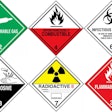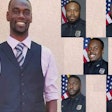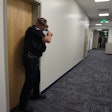My novel's shot.
It's dead.
I'm screwed.
And who do I have to thank for it?
My former boss.
How did he accomplish this? Simple. He showed some balls. Yesterday, Sheriff Lee Baca of the L.A. County Sheriff's Department said something that needed to be said.
Something that needed to be articulated a long time ago. Something LAPD Chief Bratton could have acknowledged and didn't.
That there's an ongoing race problem between blacks and Hispanics in Los Angeles County that is resulting in deaths on both sides.
The mercenary dramatist in me saw something to be mined there. And the current climate of denial gave me inspiration to write a novel on the ongoing problem, one where all the people in power are scared shitless to acknowledge something that everyone in law enforcement recognized, but nobody wanted to admit. Not that I didn't have ample research material.
A little over a decade ago, I was witness to a similar flare-up in Industry Station's jurisdiction. During one stretch, we had eleven murders in 14 days. It got to the point where we had trainees with multiple 187s under their belts and every deputy that got a "shots fired" call knew what they were rolling on before they got there. The only question to be answered was which side had gotten the upper hand.
And such was the case when I responded to Rimgrove Park one sunny afternoon. A 16-year-old black male and his uncle had gone to the park to shoot some hoops, completely unaware of the hostilities that had been taking place in the area. For some 40 minutes, Hispanic gang members sat on bleachers nearby in quiet deliberation before suddenly opening fire on the two. Though wounded, the uncle was able to find refuge in a park restroom. His nephew fell where he'd stood, center-punched in the chest. The last thing the young man saw was my ineffectual presence standing over him.
When I got back to the station, the first thing I did was check the victim's Juvenile Automated Index Number and anything else I could. I was looking for a criminal history, or any gang affiliation the boy might have had. Something that would comfort me with the knowledge that it was simply karmic justice for some evil that he'd perpetrated.
Nothing.
It's probably a sad commentary to say that it was the first murder to truly haunt me for some time, but it was. More than that, I was pissed off. For I knew that if I was a parent and aware of the problem in the area, there would have been no way in hell my son would have been on the court that day, regardless of race.
That night, I was up until well past midnight on the phone with various bureaus on the department, all of whom probably thought I was nuts (not a novel observation). I wanted someone to go to the media and let the public know what was going on, something that might prevent the murder of another child. They collectively demurred and I was told to stand down.
I was tempted to contact the news media myself, but don't believe in anonymity.
Furthermore, I suspected that when the news media contacted the Sheriff's Department for verification, it would probably get a Bratton-like reply by those in power at the time, and I would look like an alarmist chicken little.
Thankfully, the players were arrested and the killings stopped.
But in recent years they've resumed. The catalysts? Who knows? I could fill any number of speculative columns and not get close to the answer. But the more pressing issue is what is going to be done about it.
In bringing a widely known but little spoken of problem out in the open, Sheriff Baca has taken the first step.













